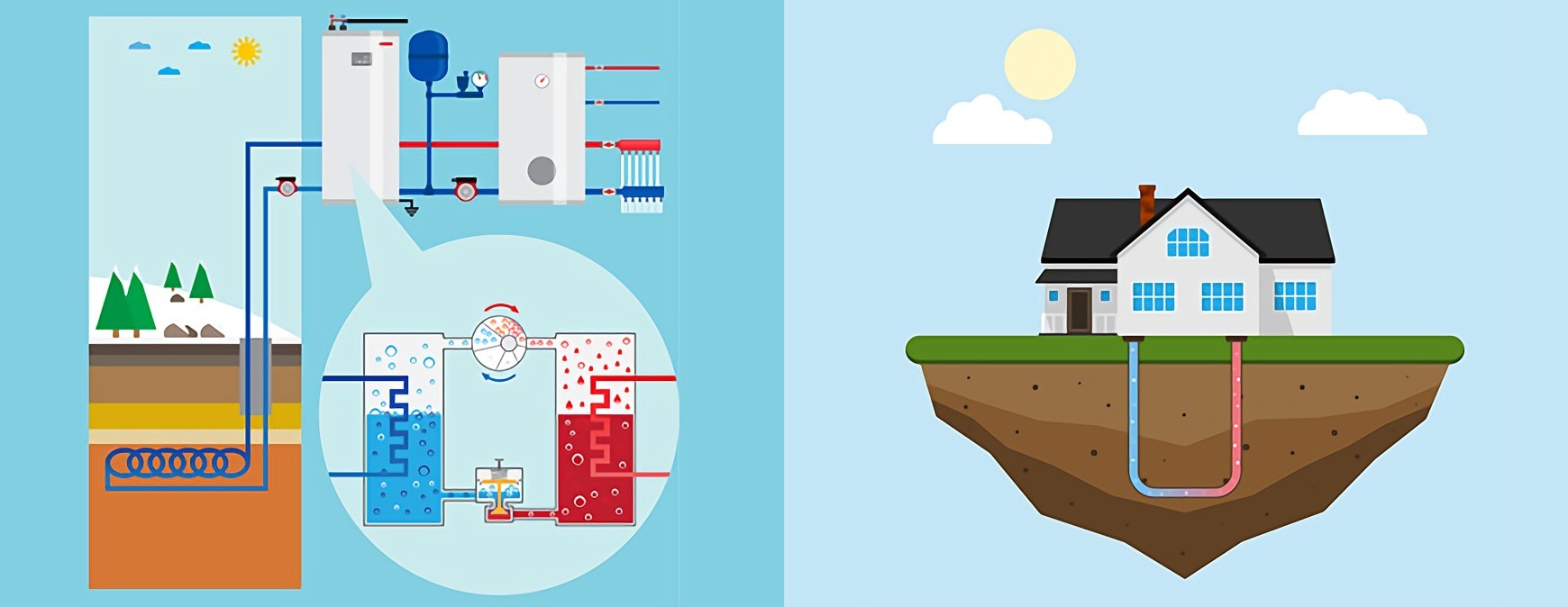RSI is a Great Training Option for Everyone
Learn more about how we can prepare you to advance your career.
When it comes to environmentally friendly HVAC systems, geothermal heat pumps are a promising and increasingly popular option. Baby boomer customers are attracted to the energy savings geothermal HVAC systems offer. Millennials consider going geothermal because it’s better for the planet. 1 In fact, geothermal is expected to supply 10 to 20 percent of the world’s energy by 2050. Anyone with HVAC training should learn about this growing area.
What Is Geothermal HVAC?
Geothermal HVAC and power systems use Earth temperature for heat exchange. While some areas of the country experiences extreme climates, temperatures underground remain constant. 2
Geothermal heat pumps are considered a form of high efficiency heat pump. These systems rely on heat transfers between the air and the ground to provide heating and cooling to homes and buildings. Two other forms of geothermal systems are direct use geothermal and deep and enhanced geothermal. Direct use geothermal systems are common in regions with volcanic or tectonic activity that results in naturally heated groundwater. In these systems, hot water is pumped to use in its current state or in heat exchangers to condition the air in the building.
Deep and enhanced geothermal systems are generally used to create electricity for large commercial, agricultural, and industrial applications. They rely on steam located far below the Earth’s surface that is accessed by drilling. 3
How Do Geothermal HVAC Systems Work?
Geothermal HVAC systems use the same science of refrigeration that other HVAC/R equipment relies on. Under the Second Law of Thermodynamics, heat naturally travels from hot or warm locations to cold ones. In a geothermal HVAC system, an electrically powered heat pump cycles fluid, usually water or refrigerant, through long loops of underground pipes. It is through this process that heat is transferred from ambient air in the building to the ground and vice versa. 4
Get Started on the Path to a New Career
Fill out our form to learn how we can help you change your life.
During the winter, the heat pump sends fluid through the pipes where the warmer rock, soil, or water underground increases the temperature of the fluid. The warm fluid is then pumped back to the building. A heat exchanger can then transfer the heat from the fluid to the building’s heating system to warm the air. A desuperheater can be used to increase the temperature of water for use in the building. The process is then repeated, with the cooler fluid being pumped back into the ground to be warmed and then returned to the building for heating. 5
In the summer, the same process occurs, but this time the fluid absorbs heat in the air and disperses it into the ground. The cycle works to continually remove heat from the air in the building, thereby cooling it. 6
What Are the Advantages and Disadvantages of Geothermal?
Similar to other new HVAC technologies that rely on renewable energy, the upfront cost of geothermal HVAC units can be high. Altogether, a system can cost $15,000 to $20,000 once installed. Home and building owners will usually recoup the upfront cost of these systems through energy savings, as they can cut utility bills by 30 to 70 percent. Studies have shown that customers see a return on their investment in seven to eight years on average. Also, there is the benefit to the environment. The reduction in greenhouse gas emissions of installing a geothermal HVAC system is equivalent to removing two vehicles from the road or planting 750 trees. 7
The Business Opportunity in Geothermal HVAC
In some markets where customers can afford the upfront costs of geothermal HVAC systems, there is a business opportunity for HVAC technicians and contractors. Since these systems are more expensive and require training to install, HVAC business owners specializing in them could set themselves apart and enjoy higher revenues compared to installing standard HVAC equipment. 8
Additional Sources
1 – http://www.achrnews.com/articles/134896-geothermal-interest-spans-all-ages-on-earth-day-2017
2 – https://energy.gov/energysaver/geothermal-heat-pumps
3 – https://www.epa.gov/rhc/geothermal-heating-and-cooling-technologies
4 – https://www.thisoldhouse.com/ideas/geothermal-heat-pump-how-it-works
5 – https://www.epa.gov/rhc/geothermal-heating-and-cooling-technologies
6 – https://www.epa.gov/rhc/geothermal-heating-and-cooling-technologies
7 – https://www.thisoldhouse.com/ideas/geothermal-heat-pump-how-it-works
8 – http://www.achrnews.com/articles/134896-geothermal-interest-spans-all-ages-on-earth-day-2017
This blog has been labeled as archived as it may no longer contain the most up-to-date data. For a list of all current blog posts, please visit our blog homepage at https://www.rsi.edu/blog/




